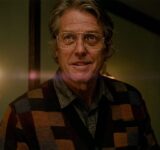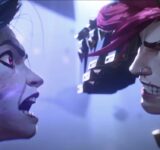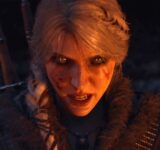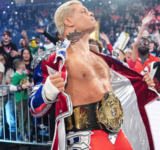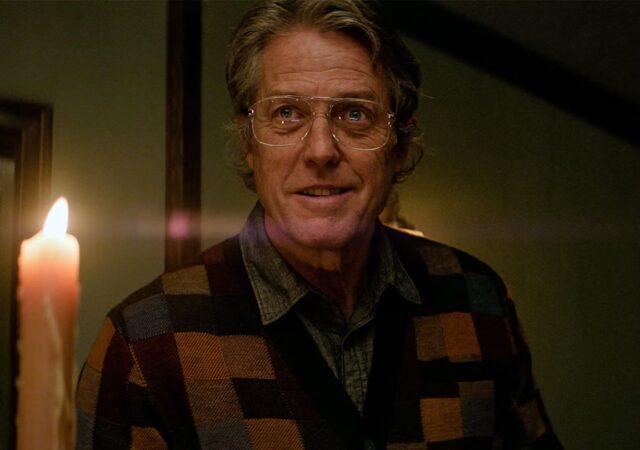May 19, 2019 is a date forever etched in the minds of Game of Thrones fans. The HBO juggernaut took its final bow after 8 groundbreaking but uneven seasons, going out not with a bang, but with a whimper. The finale, titled “The Iron Throne,” left a bitter taste, serving as an unsatisfying conclusion to a once-great show that had captured the zeitgeist like few others.
“It definitely felt like the right thing to do to go back and course-correct,” House of the Dragon showrunner Ryan Condal told me over Zoom from his home in London.
“We knew we had something special with this story of the Targaryens, this tale of Rhaenyra and Alicent and Daemon. It was a chance to give fans what they really wanted, to lean into the best parts of what made Thrones great.”
And lean in they did. House of the Dragon roared onto screens in August 2022 with the fiery fury of Balerion the Black Dread. Drawing from George R.R. Martin’s rich Targaryen history “Fire & Blood,” the series eschewed the bloated spectacle and dizzying array of characters that doomed Thrones’ final seasons, instead zeroing in on the familial conflicts and political machinations surrounding the infamous Dance of the Dragons.
“That’s the stuff that was always the most compelling about Thrones,” Condal explained, “Not the ice zombies or the CGI battles, but those intense character moments, the scheming, the betrayals, watching these complex figures navigate their world. With a more focused story and a smaller core cast, we knew we could really service those emotional journeys.”

Indeed, the heartbeat of House of the Dragon was its nuanced character work, especially when it came to its central women.
Rhaenyra Targaryen and Alicent Hightower served as perfect foils, childhood companions pushed to enmity by the ruthless gender politics of Westeros. As Rhaenyra bristled against the confines of her role as a woman and heir, Alicent found herself trapped in the gilded cage of queenship, bitter and resentful.
Their fascinatingly fraught dynamic formed the backbone of the series, with showrunners Condal and Miguel Sapochnik taking great care to flesh out both perspectives. For Condal, it was about respecting Martin’s vision while modernizing it for a 2022 audience:
“George is a product of his time, and in the books Alicent and Rhaenyra are more clear-cut villains and heroines. We wanted to really live in the grays, to show the immense pressure these women were under and how it warped them. Alicent in particular, she’s almost a footnote in Fire & Blood, reduced to this jealous shrew. But Olivia Cooke just brought such pained humanity to her, this bruised, brittle quality. You understand how she became so hardened, even as you recoil at some of her choices.”

The show also broadened its scope to encompass issues of female rage, autonomy, and empowerment. Condal elaborated:
“Westeros is a brutal world for women, but they still find ways to exert agency, often at great cost. Rhaenys choosing not to burn the Greens at the coronation, Rhaenyra suffering miscarriage after miscarriage but persevering, even Alicent weaponizing her femininity to gain power, it was all about picking at these knotted questions of what it means to be a woman in a patriarchal society.”
Of course, it wouldn’t be a Thrones show without dragons, and here again House of the Dragon triumphed.
Gone were the frustratingly underutilized lizards of Thrones’ later seasons, replaced by majestic, terrifying creatures with distinct personalities. Scenes like Aemond claiming Vhagar or Daemon singing to Vermithor were instantly iconic, the stuff of fantasy dreams.
Condal credited much of this success to a combination of cutting-edge technology and good old-fashioned restraint: “We were determined not to use the dragons as a crutch, to avoid that season 7-8 trap of just throwing money at the screen. The visual effects team did extraordinary work, but we never lost sight of the story. The spectacle always flowed from the character drama, not the other way around.”

Nowhere was this more apparent than in the gory, gut-wrenching finale, which saw the long-simmering tensions between the Greens and Blacks finally boil over. As dragon fought dragon and the bodies piled up, it was clear that House of the Dragon had stuck the landing in a way its predecessor hadn’t. The sheer visceral impact, the sense of tragic inevitability, it was immensely satisfying and also profoundly sad.
And that, in the end, is perhaps the show’s greatest triumph. By narrowing its focus and putting in the character work, House of the Dragon managed to recapture the magic of Thrones’ early seasons while carving its own distinct identity.
It was a redemption story, not just for the franchise but for the very idea of prestige TV fantasy. Condal mused:
“After the backlash to the Thrones finale, there was this sense that maybe the genre had been a fluke, that it couldn’t sustain itself long-term. I think we proved that with the right approach, with careful attention to story and character, these big epics absolutely have a place. You don’t need to dumb things down or smooth away all the edges. Audiences are smart, they can handle complexity and moral ambiguity. It’s just a matter of doing it justice.”
So how did House of the Dragon succeed where Game of Thrones ultimately failed? To hear it from showrunner Ryan Condal, it all came down to two things: specificity of vision and reverence for the source material.

“I think one of the issues with Thrones’ final seasons is they sort of lost the thread of what made the show special in the first place,” Condal explained in a recent interview. “There was so much plot to get through, so many characters and locations, it became more about the spectacle than the storytelling. With House of the Dragon, we really wanted to narrow the focus, to drill down on this one family and this one conflict.”
That family, of course, is the Targaryens, the dragonriding dynasty whose bloody civil war, known as the Dance of the Dragons, tore Westeros apart nearly two centuries before the events of Game of Thrones.
Drawing heavily from George R.R. Martin’s fictional history book Fire & Blood, House of the Dragon charts the lead-up to and early stages of this cataclysmic conflict, with a particular focus on the rivalry between Princess Rhaenyra Targaryen and Queen Alicent Hightower.
In lesser hands, this could have easily devolved into a dry history lesson or a pale imitation of Thrones’ soapy intrigue. But Condal and his team managed to make the Dance feel vital and resonant, largely by fleshing out the central players and bringing new depth to Martin’s often archetypal characterizations. Nowhere was this more apparent than with Rhaenyra and Alicent themselves, played as adults by Emma D’Arcy and Olivia Cooke, respectively.
“George has made no secret that he based Rhaenyra and Alicent on historical figures from England’s 12th century civil war, the Anarchy,” Condal noted. “But in Fire & Blood, they’re painted in pretty broad strokes. We wanted to really get under their skin, to explore how these two women who started out as best friends could become such bitter enemies.”

To that end, the show devoted significant time to Rhaenyra and Alicent’s younger years, with Milly Alcock and Emily Carey delivering breakout performances as the teenage versions of the characters. Through their eyes, we saw the suffocating pressure placed on women in Westeros’s patriarchal society, the impossible demands of duty and decorum that warp even the closest of bonds.
As the story progressed and the rivalry between the two queens heated up, House of the Dragon continued to find new shades and nuances to their dynamic.
In one of the season’s most electrifying scenes, Rhaenyra and Alicent shared a charged confrontation in the Red Keep’s godswood, their old affection curdling into barely concealed hate. It was a masterclass in subdued intensity from D’Arcy and Cooke, a reminder of the power of great acting to elevate even the most familiar of tropes.
Indeed, across the board, House of the Dragon’s cast proved to be one of its greatest assets.
From Paddy Considine’s heartbreaking turn as the feeble King Viserys to Matt Smith’s swaggering, morally ambiguous Daemon Targaryen, the performances were uniformly excellent, imbuing even minor characters with rich inner lives. Special mention must also go to Eve Best as the shrewd and formidable Rhaenys Velaryon, who nearly stole the show with her tour-de-force display of dragon ex machina.

That finale, titled “The Black Queen,” was perhaps the most potent distillation of what made House of the Dragon such a triumph. Tense, bloody, and emotionally gutting, it capped off a season that had been steadily building in momentum and stakes, delivering payoff after powerful payoff. From the tragic death of Lucerys Velaryon to Rhaenyra’s final, anguished scream, it was a symphony of grief and rage, a fitting end to a story about the cyclic nature of violence and the corrosive effects of unchecked ambition.
More than that, though, it was a testament to the show’s commitment to its characters and themes. In a post-finale interview with The Hollywood Reporter, Condal spoke candidly about the challenges of adapting Fire & Blood, a relatively slender volume compared to the sprawling novels that formed the basis for Game of Thrones:
“Fire & Blood is written as a history, not a novel. It’s full of broad strokes and big events, but it doesn’t really get into the characters’ heads the way George’s other books do. So we had to do a lot of inventing and extrapolating, trying to fill in the blanks and find the human drama underneath the historical record.”
Central to this was the show’s incisive exploration of gender politics and the myriad ways in which women are denied agency and autonomy in a patriarchal society. From Rhaenyra’s suffocating sense of duty to Alicent’s growing bitterness and resentment, the series dug deep into the psychic toll of living in a world where women are seen primarily as broodmares and bargaining chips.

In one of the season’s most harrowing and controversial scenes, a young Rhaenyra is essentially pimped out by her father to curry favor with a powerful lord. It’s a brutal, stomach-churning sequence, one that lays bare the transactional nature of marriage and alliances in Westeros.
But crucially, the show never loses sight of Rhaenyra’s humanity, her pain and fury and resilience in the face of such dehumanizing treatment.
This compassion and care extended to even the show’s ostensible villains. Take Criston Cole, the dashing knight who becomes one of Rhaenyra’s most implacable foes. In the hands of actor Fabien Frankel, Criston emerged as a figure of tragic dimensions, a man undone by his own rigid moralism and misplaced sense of honor. His arc, from lovestruck swain to embittered kingmaker, served as a potent reminder of the ways in which toxic masculinity can warp and destroy even the noblest of souls.
Of course, it wouldn’t be a Game of Thrones show without dragons, and here too House of the Dragon delivered in spades.
From the awe-inspiring sight of Daemon Targaryen riding Caraxes into battle to the heart-stopping horror of the Storms End confrontation, the show’s scaly stars were a constant source of wonder and terror. But even more impressive was the way in which they were integrated into the story, not just as cool visual effects but as vital extensions of the characters and themes.
In one of the most poignant moments of the season, a dying King Viserys reflects on the dream that has haunted him for years, the prophesied return of the White Walkers and the coming of a hero destined to unite the realm against them. As he speaks, we see a montage of the Targaryen dragons in all their glory, a reminder of the power and potential of this extraordinary family. It’s a beautiful, bittersweet scene, one that underscores the tragedy of the Dance and the way in which petty squabbles and power struggles can blind us to the bigger picture.
This, in the end, is perhaps House of the Dragon’s greatest achievement. By zeroing in on a specific story and set of characters, the show was able to explore universal themes of love, loyalty, ambition, and sacrifice, to show the human faces behind the grand sweep of history. It was a redemptive act, a course correction for a franchise that had lost its way, and a powerful reminder of the enduring appeal of George R.R. Martin’s world.
As for what the future holds, Condal played coy, though he did express excitement about the upcoming “Dunk and Egg” series he’s executive producing:
“I’ve always loved those novellas, there’s a lighter, more adventurous tone to them that I think will complement House of the Dragon nicely. But I can’t say much more than that. Right now, I’m just focused on making season 2 the best it can possibly be. We’ve set a high bar for ourselves, and I’m determined to clear it.”

With a second season already in production and a slew of other spin-offs in various stages of development, the future of Westeros looks bright. But whatever comes next, House of the Dragon will always stand as a testament to the power of great storytelling, a shining example of what can happen when a talented team of artists comes together to bring a beloved property to life. It was a redemption story, not just for Game of Thrones but for the very idea of prestige TV fantasy, and a thrilling indication of the heights this genre can reach when given the care and attention it deserves.
In a crowded and cutthroat television landscape, House of the Dragon roared.


